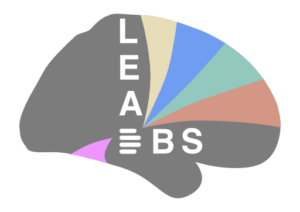Forum Replies Created
-
AuthorPosts
-
andreashorn
KeymasterHi Rubens,
good to hear from you – could it be that the sample size is too small for a t-test? What is your N of the two groups?
Once you click the button, the raw data should appear in your Matlab workspace as well, so you can easily export and do stats elsewhere, as well.Hope that helps!
Best, Andy
andreashorn
KeymasterHi Michael, no it doesnt.
The VTA algorithm is well described here:
https://www.ncbi.nlm.nih.gov/pubmed/30179717Best, Andy
andreashorn
KeymasterHi there,
no, by default, the global signal is not regressed out (but it’s calculated).
https://github.com/leaddbs/leaddbs/blob/master/connectomics/ea_extract_timecourses.m#L193As you can see, the according line is commented out – if instead you’d want to correct for the global signal, you could uncomment that line ^^.
Best, Andy
andreashorn
KeymasterHi Vinny,
we use an FSL tool called “slicer”.
The function is ea_gencheckregpair.mBest, Andy
andreashorn
Keymasterandreashorn
KeymasterHi SY,
If you visualize in Template space, the electrodes are registered to the atlas (which remains the same model), if you visualize in native space, it is the other way around (and that is sometimes called “atlas based segmentation”). So in both steps the patient data is used. However, in the template visualization, the atlas does not change at all. This is crucial for group studies, i.e. to make electrode placement comparable across patients.
I can recommend for you to read the newest Lead-DBS methods paper for some more info: https://www.researchgate.net/publication/327380509_Lead-DBS_v2_Towards_a_comprehensive_pipeline_for_deep_brain_stimulation_imaging
It is easily written and gives a good overview about what Lead-DBS does.
Best, Andy
andreashorn
KeymasterHi SY,
please set the Matlab path to include both the base folder of Lead-DBS and the base folder of SPM12 (also see manual or google how to add code to the Matlab path in general).
Best, Andy
andreashorn
KeymasterHi Michael,
it’s not easy to help you on this problem.
The best I can do is to point you toward the walkthrough videos where you can see how it should look like:or the videos of our workshop in Shanghai:
Best, Andy
andreashorn
KeymasterHi Kurt,
thanks for your kind words. And yes, I’d solve question 2 exactly as you would – since the resolution of the VTAs is so good a reslice to the anchor preop image (often the T1) won’t harm them and we never felt the need to export one in that resolution.
Re q 1, two options:
1. In Lead Group create a new variable with one entry for each patient (the default) and fill it with ones (e.g. put a 1 into each row). Then check “Map regressor to VATs”, select all patients and click visualize 3D. This will create a nifti file (in the lead group directory) that is the group’s VTA. It will also visualize the group VTA in the 3D viewer directly.
2. Second option is to just create it with e.g. SPM imcalc or fslmaths. In SPM imcalc, select a template (e.g. MNI space) first and then all VTAs. Then only use i2, i3, i4.. (ignore i1, i.e. the template) in your expression. The result will still be exported in MNI space (i.e. in the same resolution of i1, the template you selected).If you have the joint VTA as a nifti file (which will result from either solution 1 or 2) then you can always display that (or any other nifti file) in the lead DBS 3D viewer by choosing Add Objects -> Add Roi.
Hope this helps!
Best, Andy
andreashorn
KeymasterHi arianna,
the nuclei displayed are usually from an atlas but you can also visualize in native space (see the popup in the main GUI) and then atlas-based segmentation is used (read e.g. Ewert et al. 2019 NeuroImage for more info on that).
Regarding the format, things are stored in custom files that are either Matlab files or Nifti images.
Maybe it makes sense for you to watch the walkthrough tutorial on our website which explains a few of these basic questions.Best, Andy
andreashorn
KeymasterGreat, glad to hear! A
andreashorn
KeymasterHi Daniel,
thanks for reporting this since it was a real bug (only was able to test/reproduce today). I just fixed it and pushed the fix to github. In ~6 hours time or so, you should be able to run Install > Install Developer Version from the Lead-DBS GUI menu to get the fix installed. Then it should work again.
Could be you’d need to delete the /atlases folder inside your patient folder once but think it should work without that.Best, Andy
andreashorn
KeymasterHi Daniel, could you try this with a different atlas (e.g. the DISTAL minimal) one first and see if that works?
I think the problem is of an empty nifti file which could happen in complicated atlases with small nuclei. We somehow nearly never work in native space, that’s why not every error is ironed out there.andreashorn
KeymasterHi Rubens,
this is a surfice question – not really a lead-dbs question. But surfice is pretty easy to use.
You can get it from here and there are also instructions there:
https://www.nitrc.org/projects/surfice/There’s also a copy installed in Lead-DBS but it’s easier to use the standalone.
There is a matlab call that will directly produce an image using surfice (simply ea_surfice(‘yourfilename.nii’)) but I’d still recommend to use the surfice standalone and add some overlays there.
Best, Andy
andreashorn
KeymasterHi Shai,
yes, they are automatically stored (in the ea_reconstruction.mat file).
Best, Andy
-
AuthorPosts

